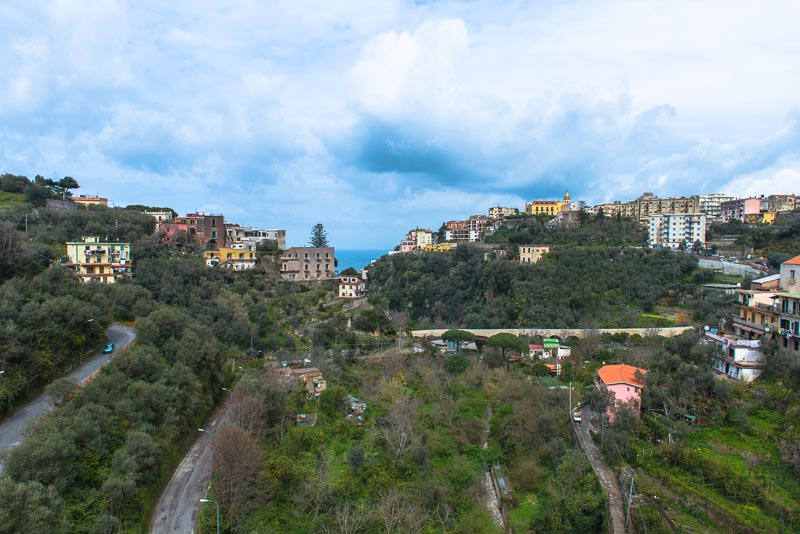
27.3.2013: Pompeji
About 2 km from our hotel there is the stop "Seiano" of the "Circumvesuviana", a narrow track municipal railway between Naples and the cities around, this branch goes to Sorrento. The excavations of Pompeji aare about 200 m from a station of this line, so take the car to the station and public transport from there.

Near Seiano, the train goes over a huge bridge, from where you have a nice view.
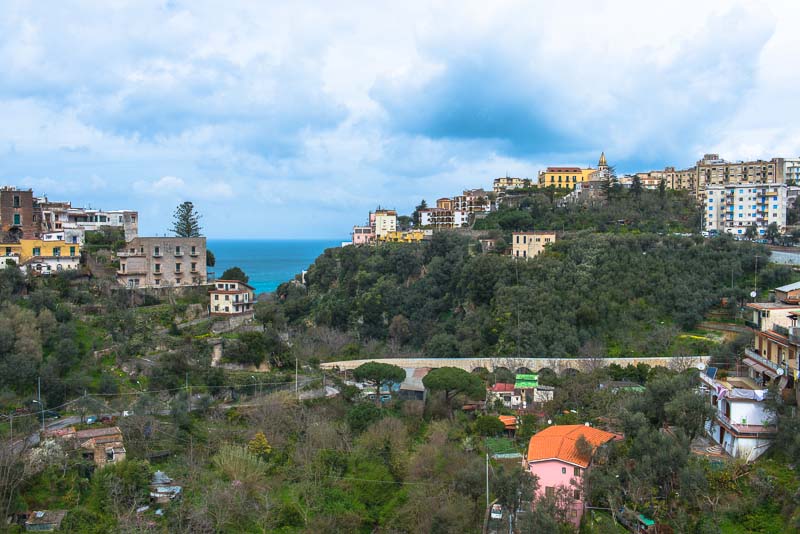
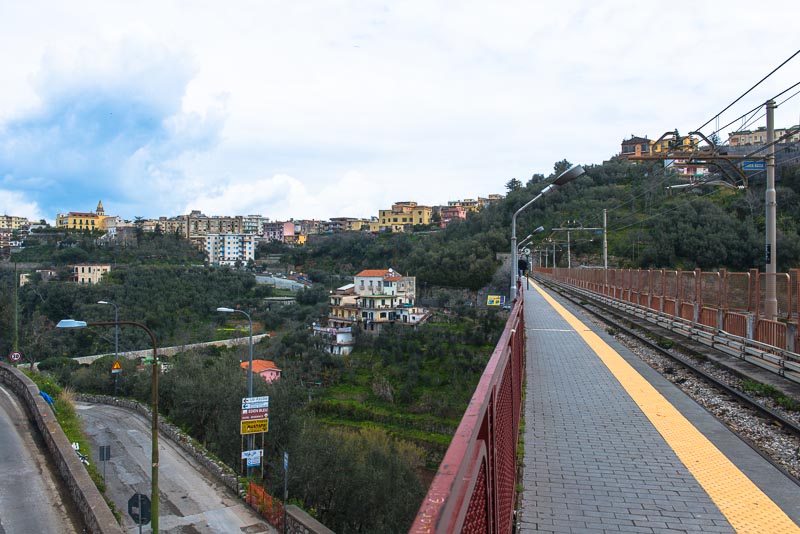
On one side of the bridge a tunnel ...
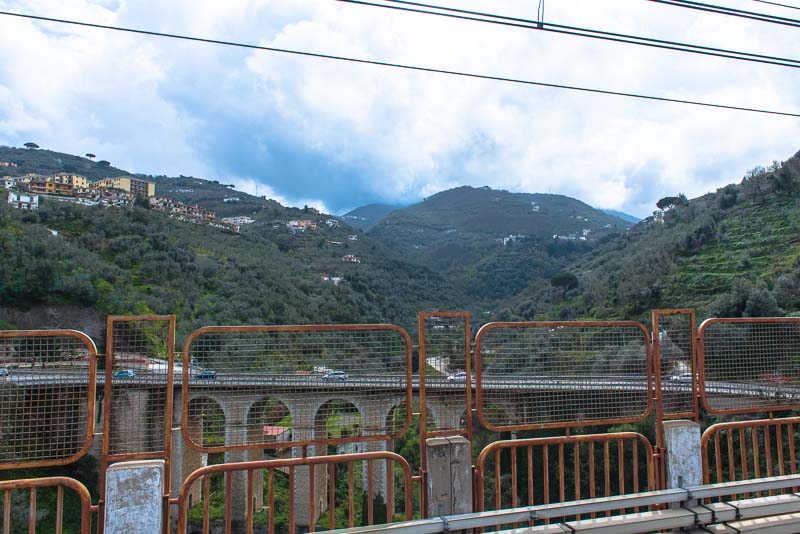
... at its side the brige of the road ...
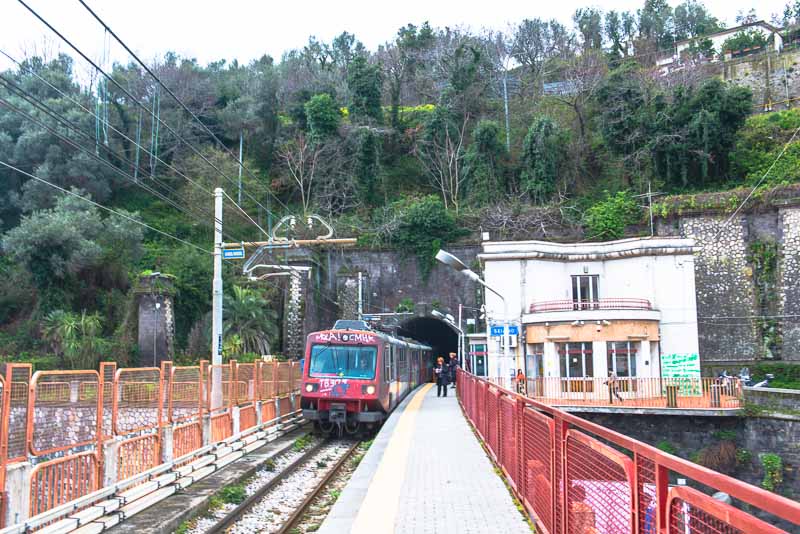
... and on the other side another tunnel, in between the bridge with the platform of the single track line. Trains, station buldings and and platforms are a bit run-down to say the least..
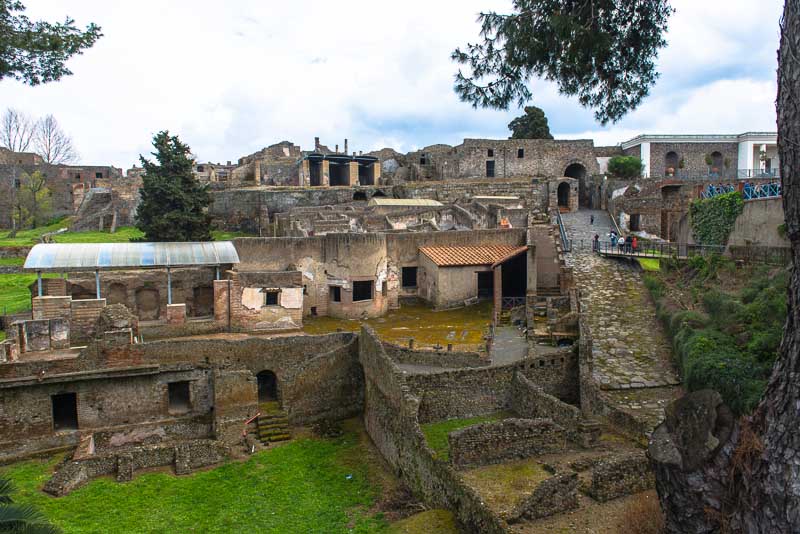
At the entrance of the excavations of Pompeji, leading over the historical moat.
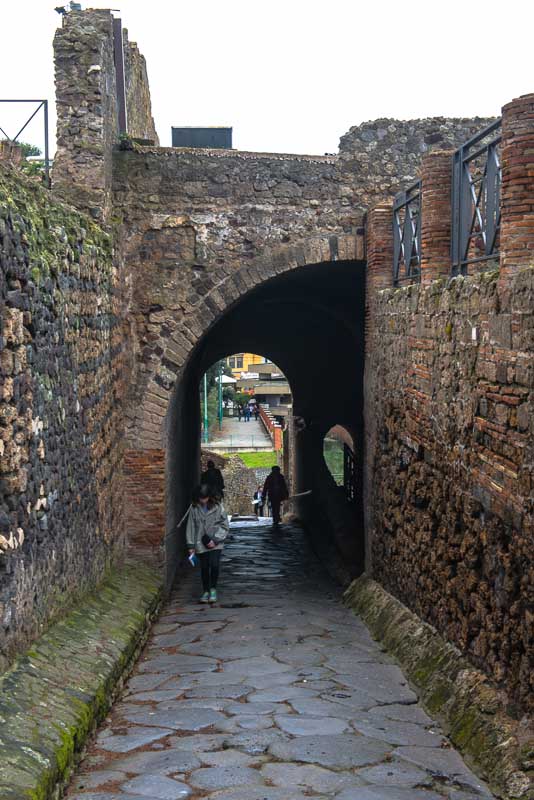
The town gate Porta marina. As opposed to the flat roofs of the dwelling houses held by wooden beams, which broke down under the ashes of the volcano, some public buildings with stone arches have withstood the pressure.
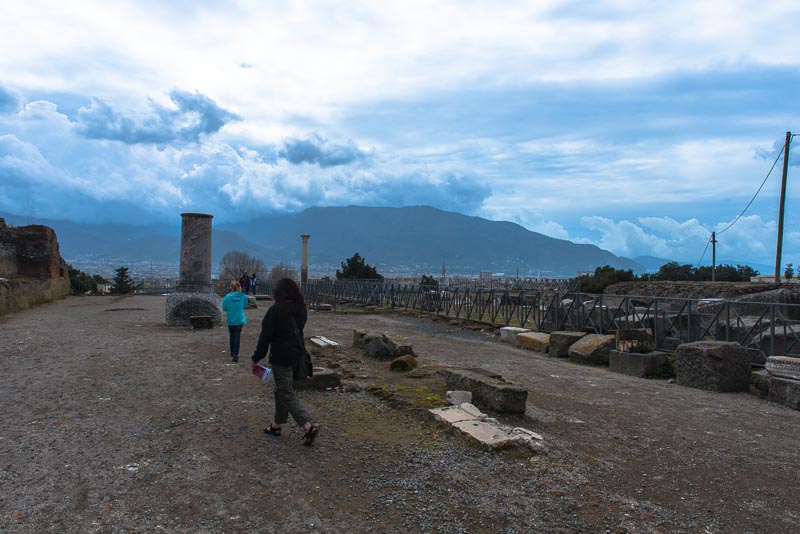
Venus temple is heavily deteriorated, but from here you get a fine view over the plain of Castellamare tol Monte Faito, which is wrapped in clouds.
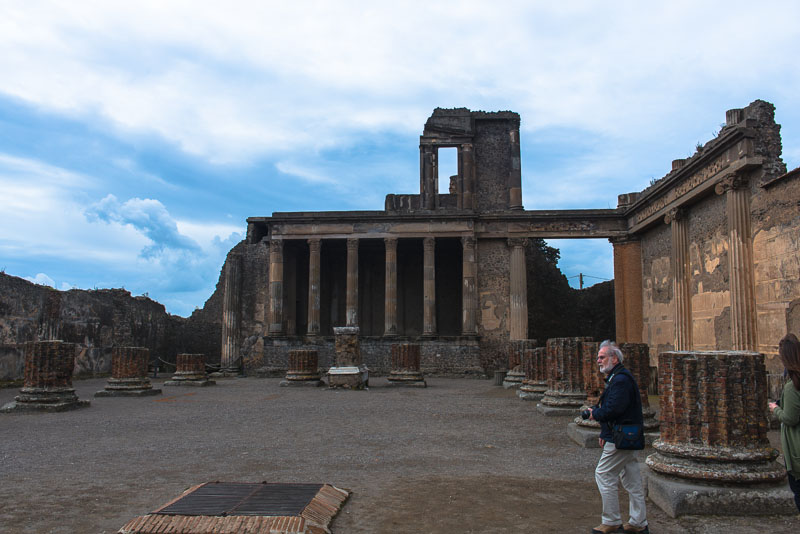
Basilika. In late antiquity, a bsilica was a church buiding, whereas in early centuries a basilica was a big public building for courts and trade.
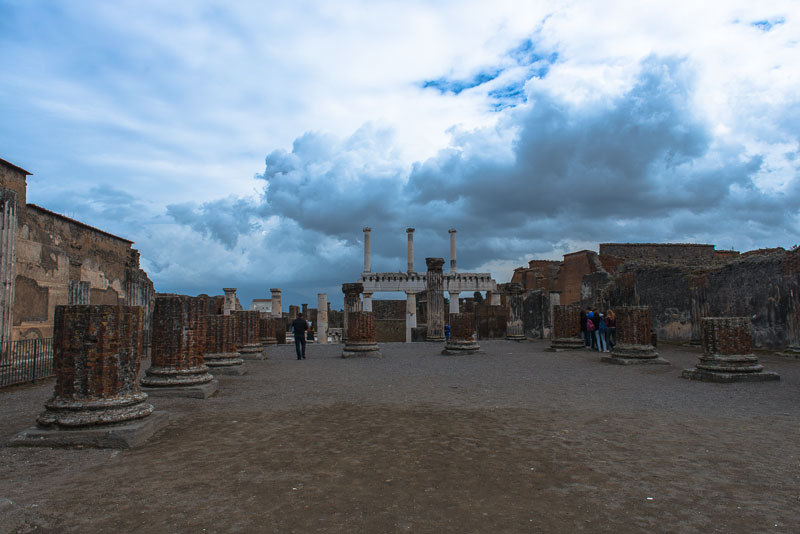
Basilika
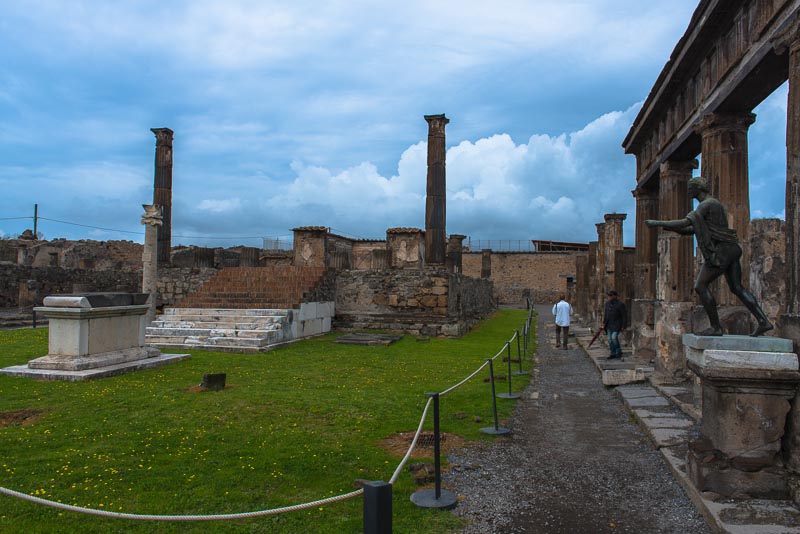
The Apollo temple. Das Roman empire was multiethnic, so in fact it was a "multi gods" empire.
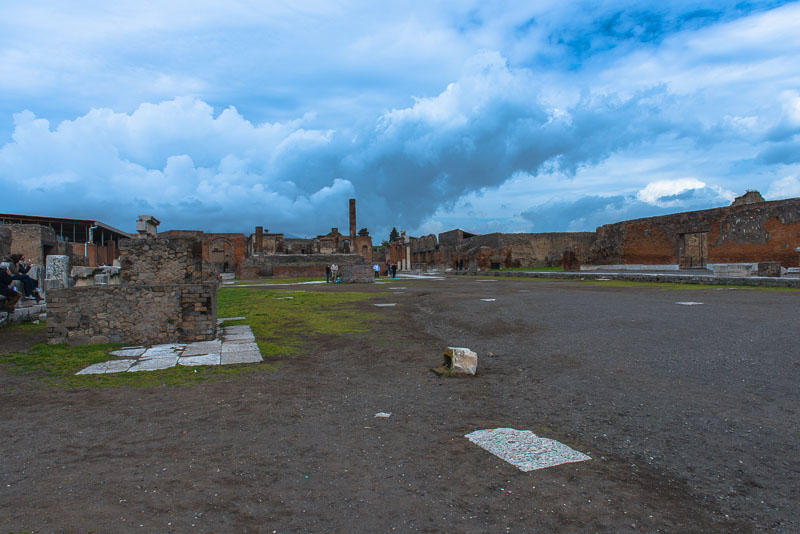
The Forum. A large square not really for market but for public meeting. People met there in the evening ...
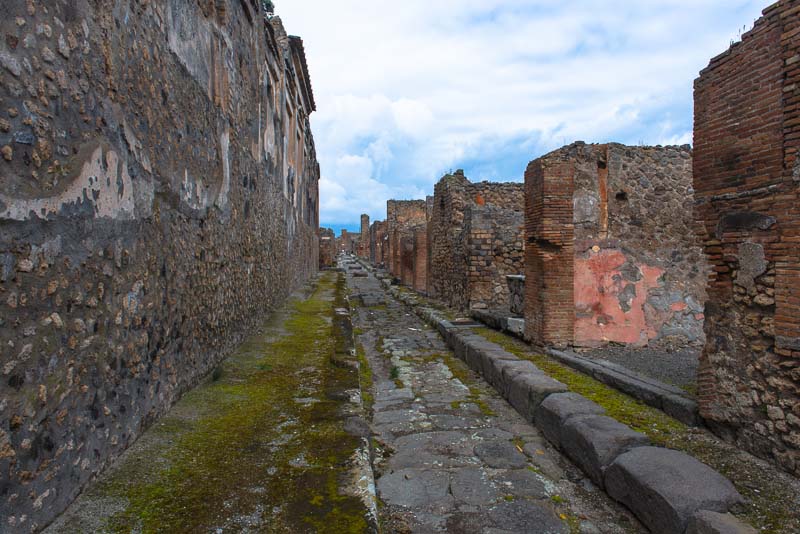
The city of Pompeji is huge. Its ground area is 66 Ha, that is 1,5 fold of the Vatikan city, one third of Monaco or (for you English) about 100 pitches.
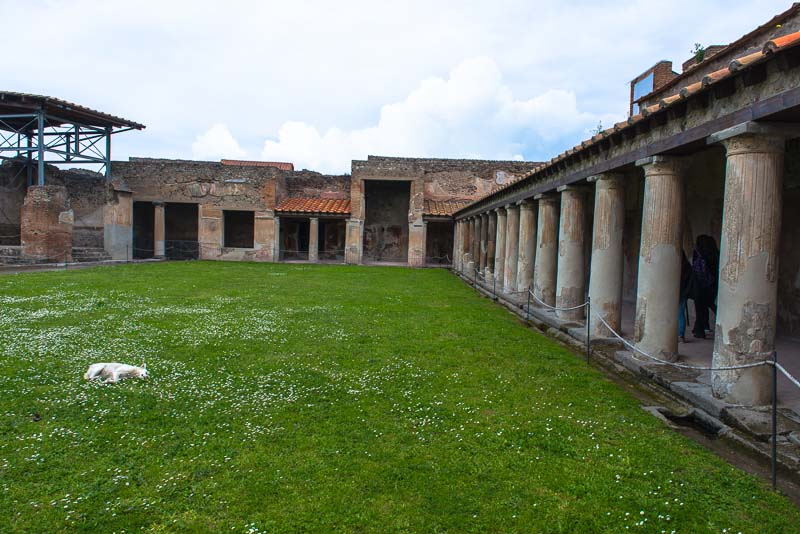
The Thermic spa.
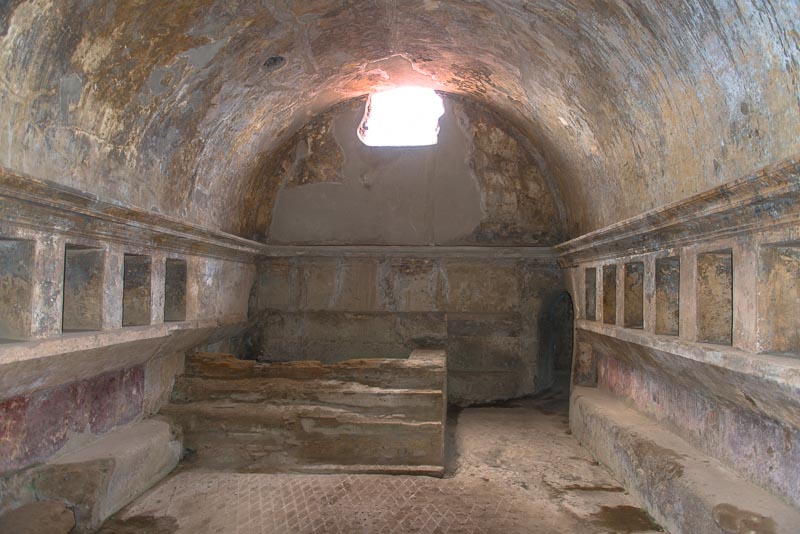
Here arches have been preserved, carriying original wall paintings.
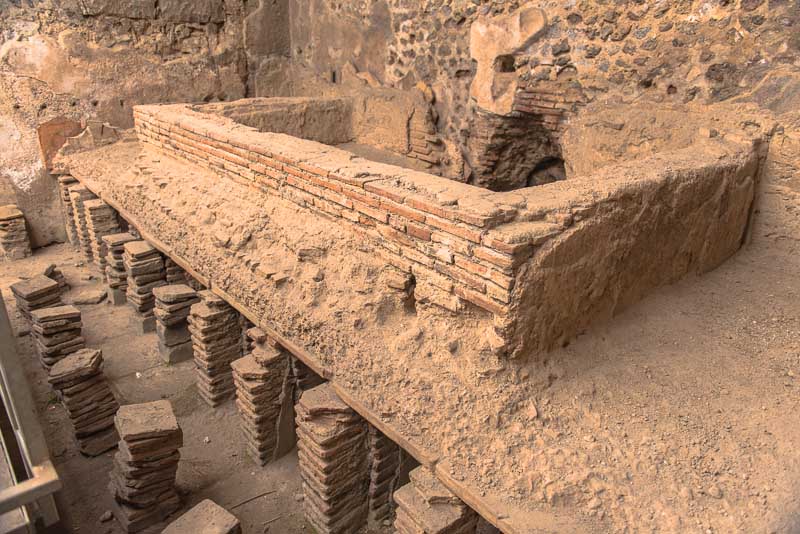
The Thermic spa had a floor heating: neneath the floor was a hollow space jacked up by stacks of ceramic tiles. Hot steam was led into the hollow space which efficiently warmed the tiles (which store heat very well).
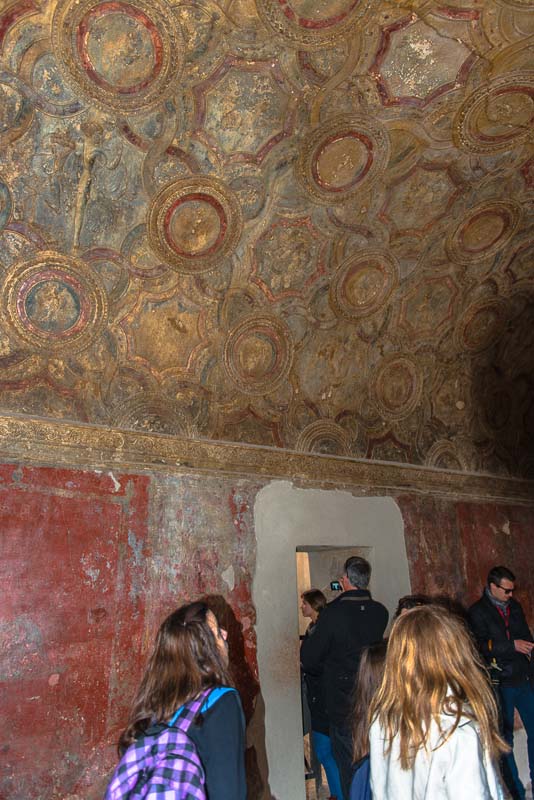
Wall paintings.
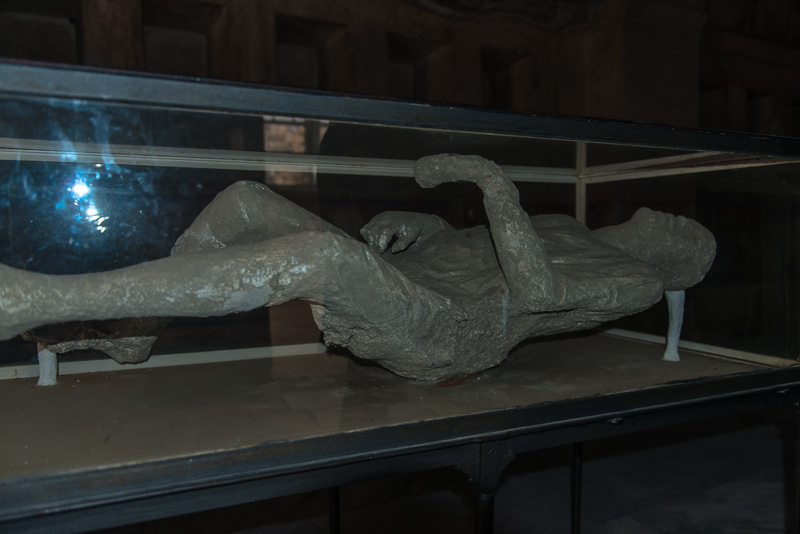
The Vesuvius eruption was so sudden and gigantic, that many people could not flee. They were entrapped in the ashes and died. The bodies decayed, but the hollow spaces remained. The excavators filled these spaces with gypsum or the like, thus preserving the outer contours of the people.
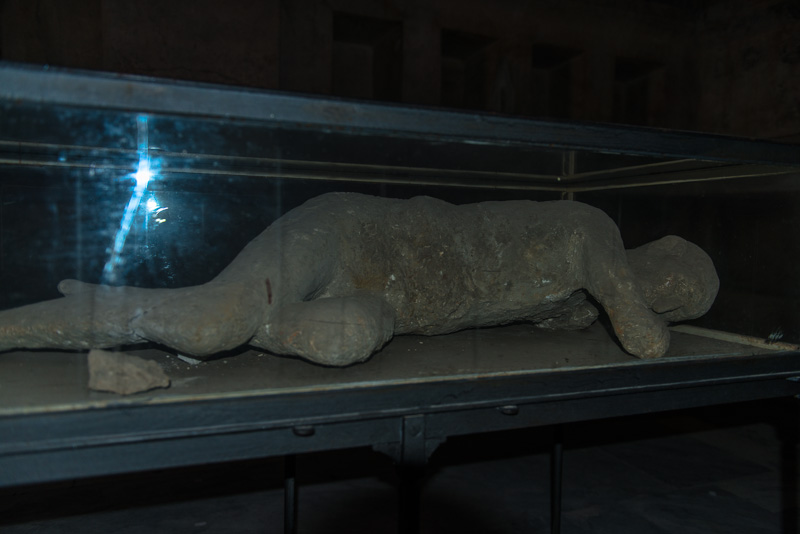
...
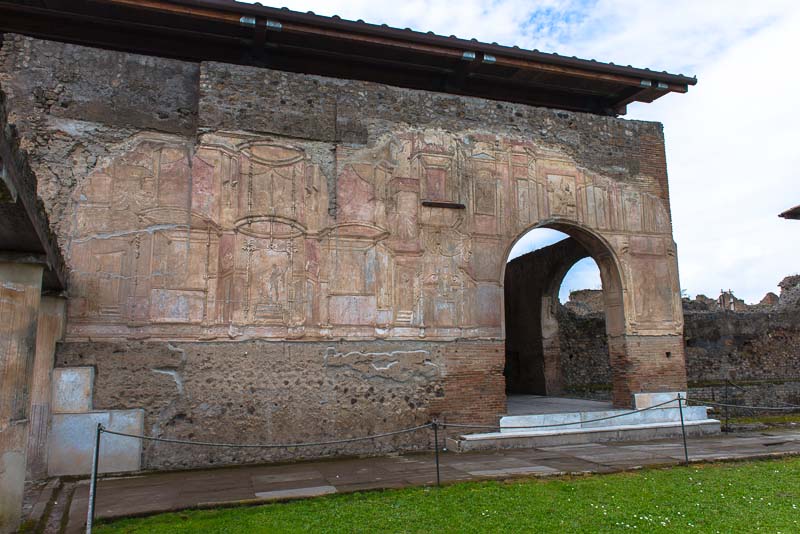
Wall paintings on the outer wall of the thermic spa.

Stepping stones for dry crossing of the street when lots of water are rinsing along the street during heavy rain (which occurs in winter or during summer thunderstorms). Traces of the carriages clearly can be seen.
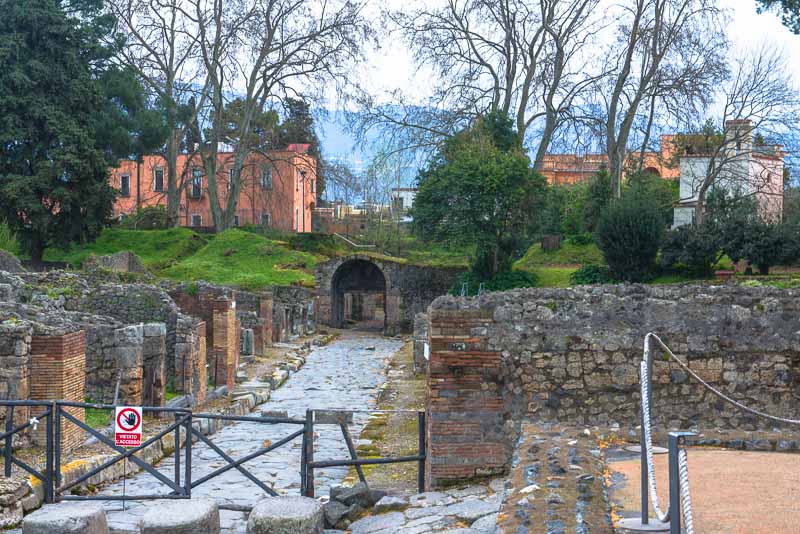
Another town gate - Porta stabia
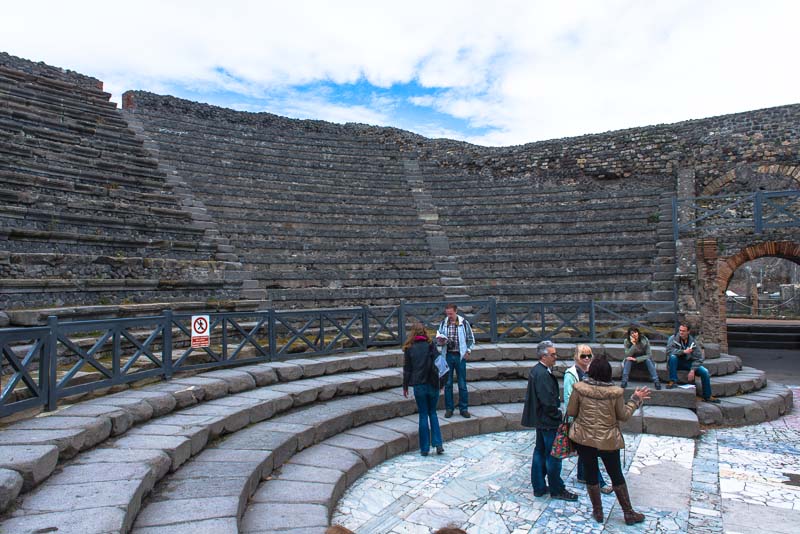
We walk to the Small Theater (Odeion)
Panoramic picture of the Quadriporticus of the gladiators near the two theaters, which have been built in close proximity to another. This was room for the visitors during pauses. Later on, it was a gladiator´s school. Click here or into the picture for a larger version.
The big theatre, the panoramic picture a bit blurred to the right due to the perspective. Click here or into the picture for a larger version.
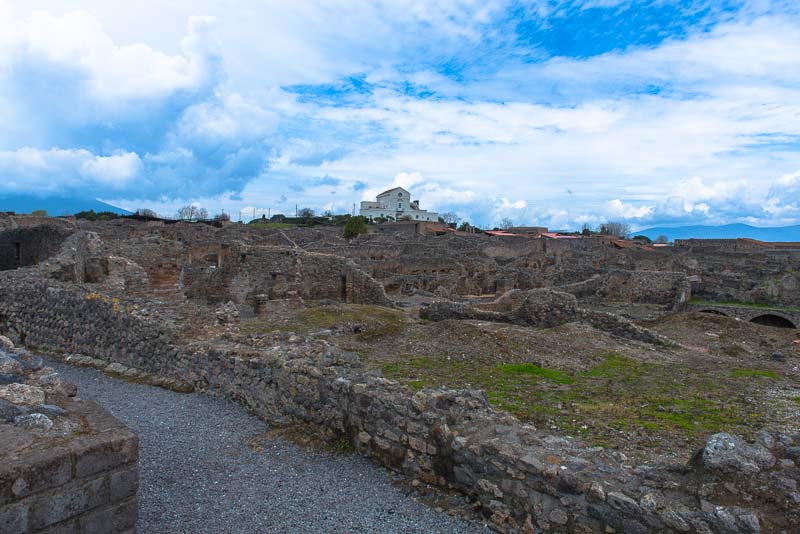
View to the North from the upper end of the Big theatre. Far left Vesuvius in clouds, the house in the background is built on the level before the excavation. According to different sources, the spillage of the city is descrived between 6-8 and 11 metres.
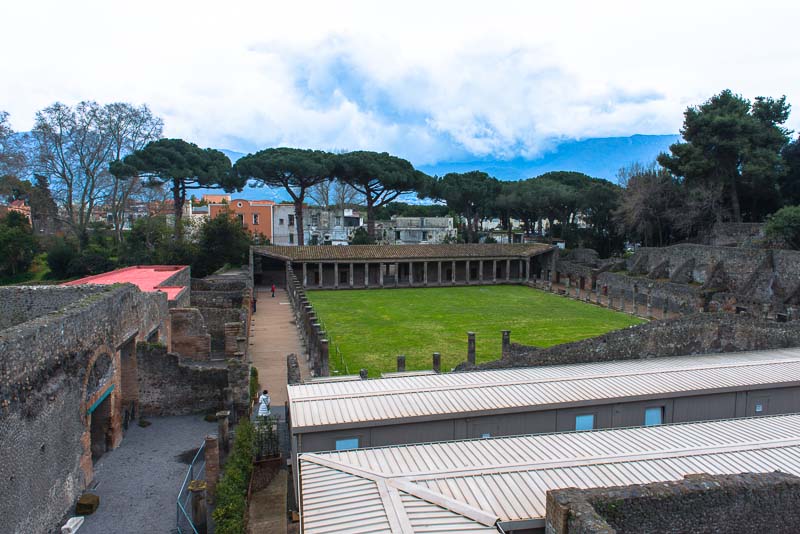
View from thew big theatre to the Quadriporticus.
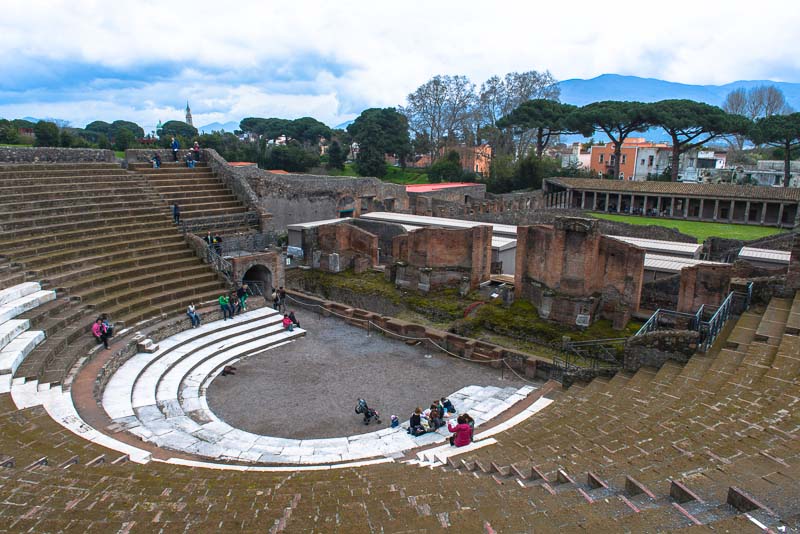
Big theatre and Quadriporticus.

Immediately behind the big theatre is the temple of Isis, an egyptian goddess - no problem in this multicultural society.
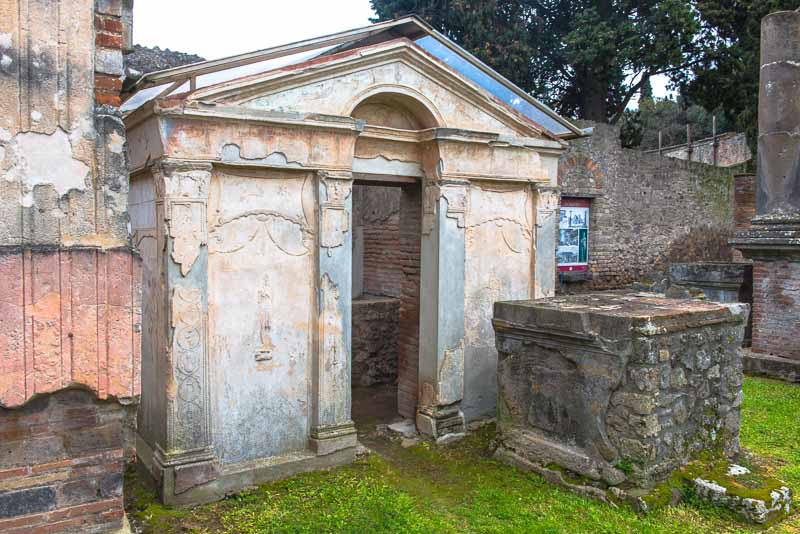
Isis temple
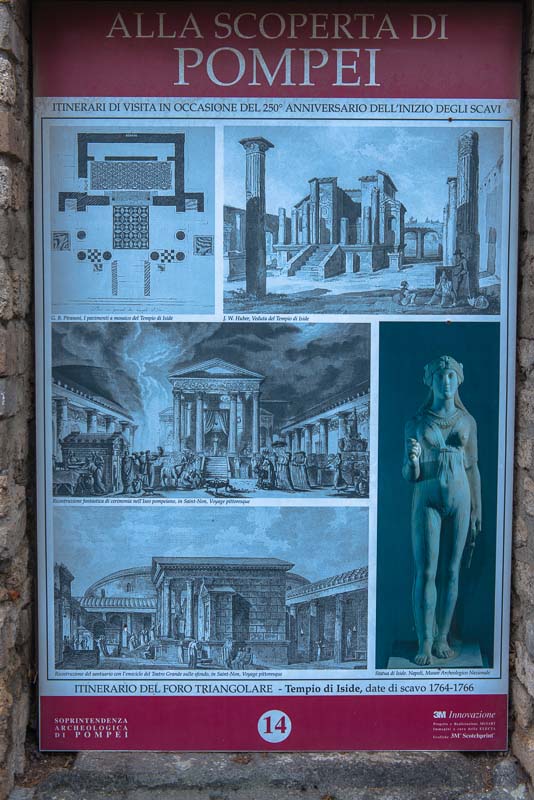
Information plate to the Isis temple.
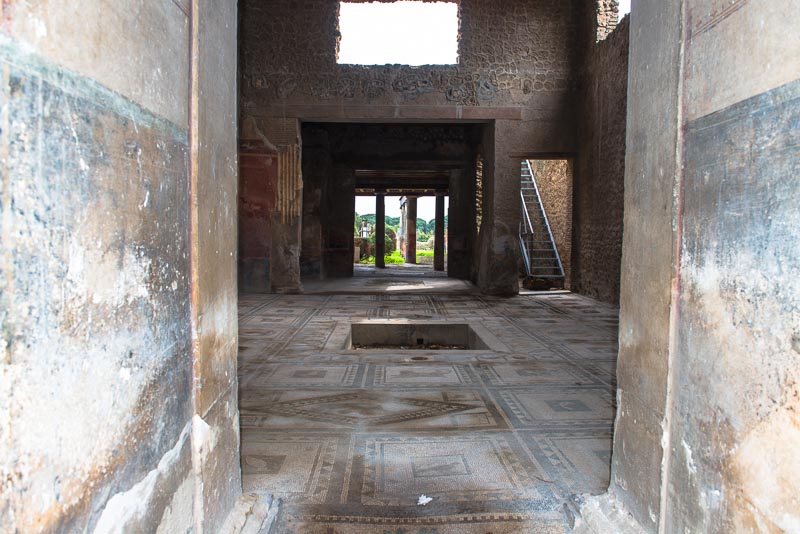
One of the well preserved typical Roman houses ...
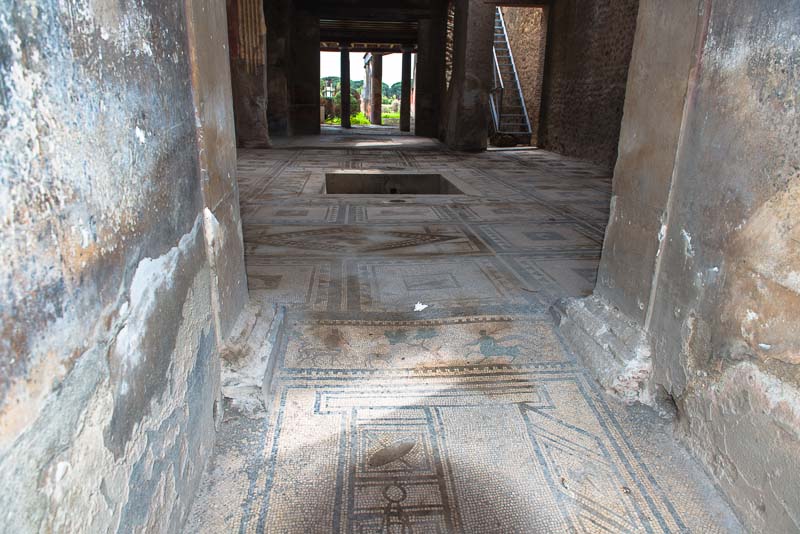
... with beautiful mosaic floor.
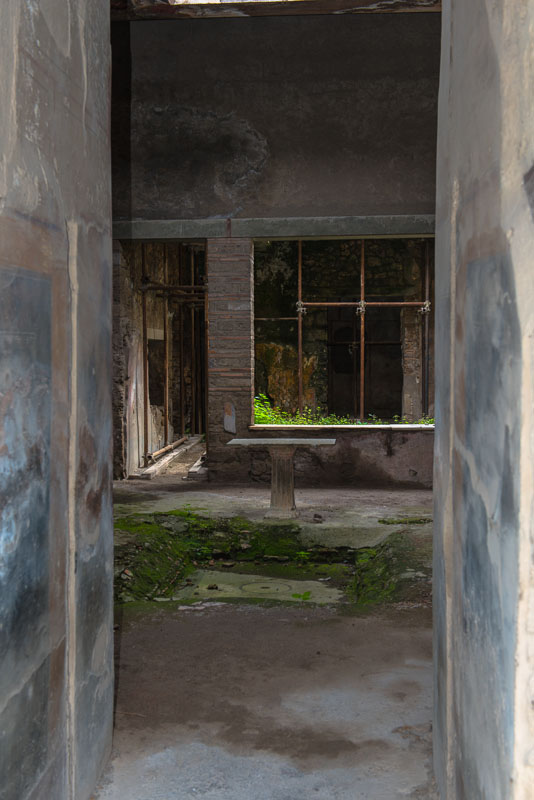
In the centre of the house was the atrium, an open space, with a water basin. Rain was rinsing into this basin from the roofs around.
Now some information from the plates (if you are interested)
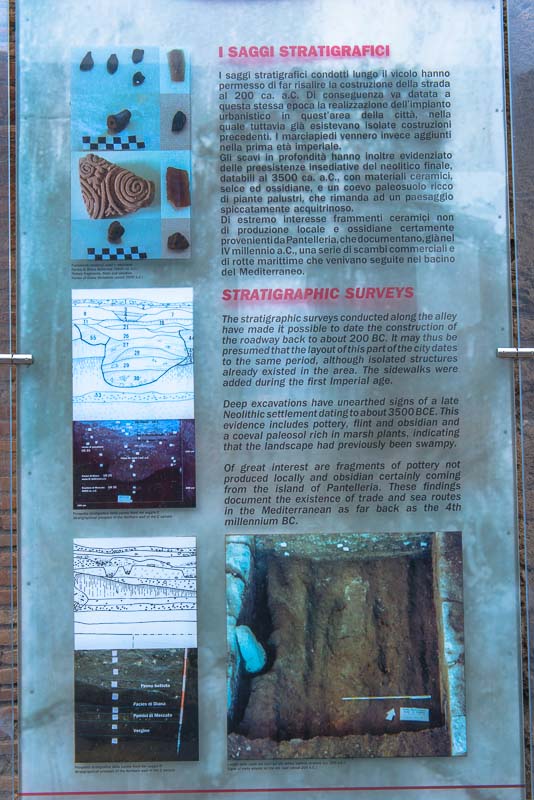
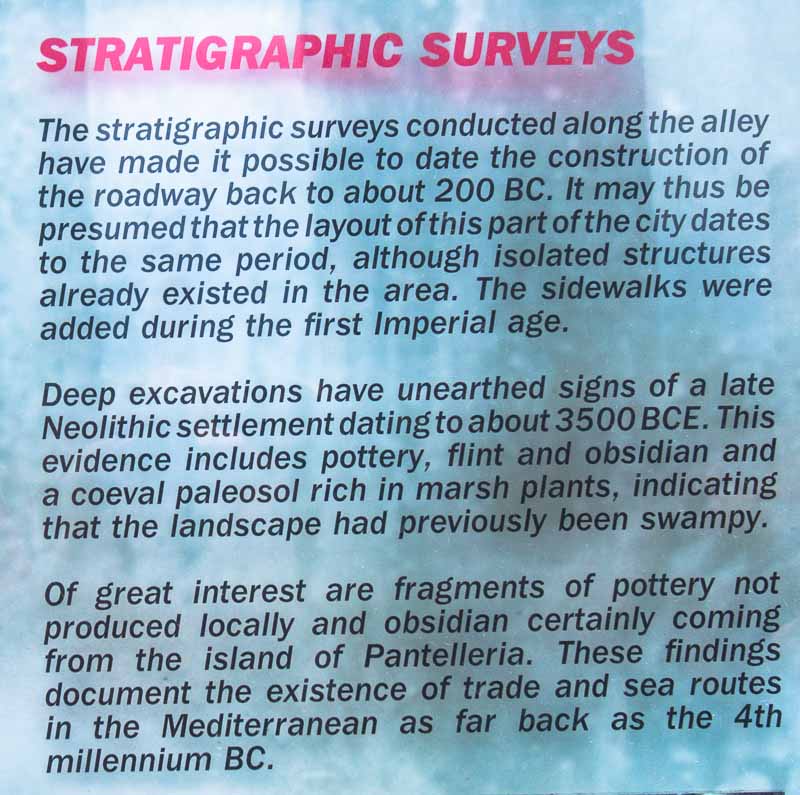
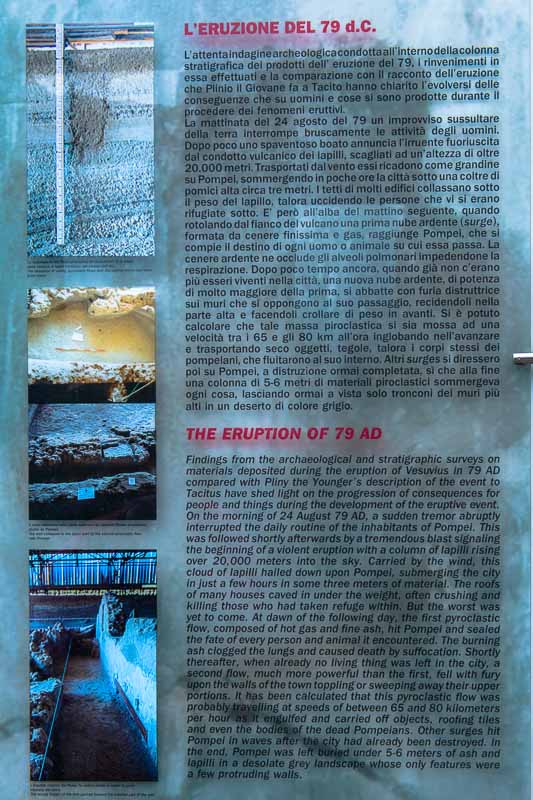
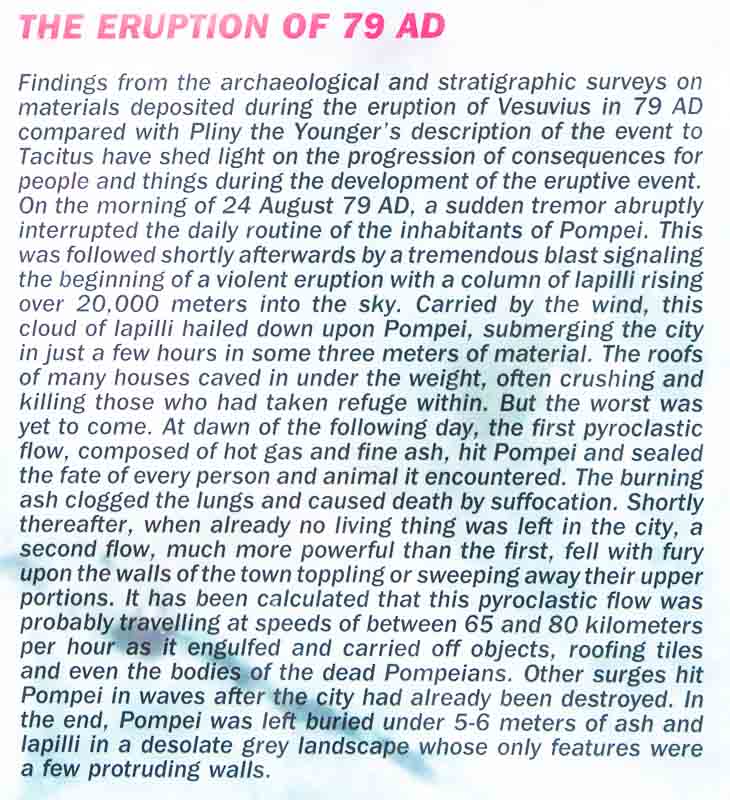
Einige Erklärungstafeln, leider nur in Italienisch und Englisch. Weitere Info´s zur Stadt aber hier, über den Vulkanausbruch hier.
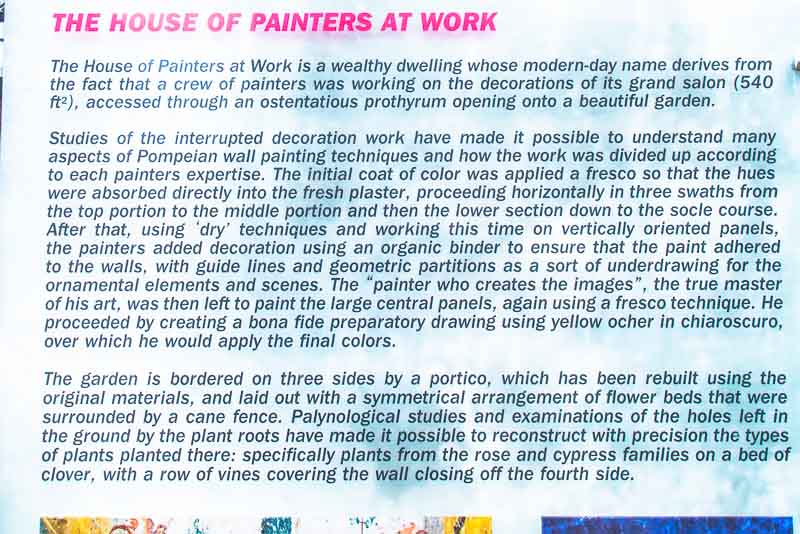
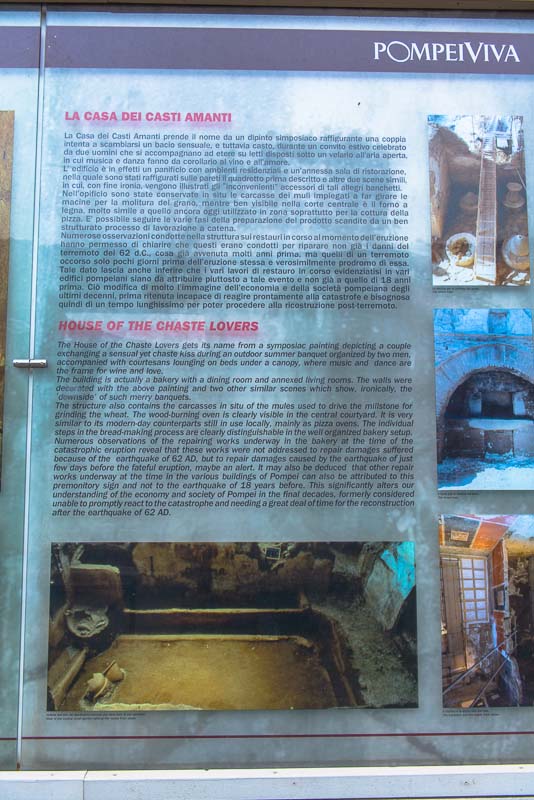
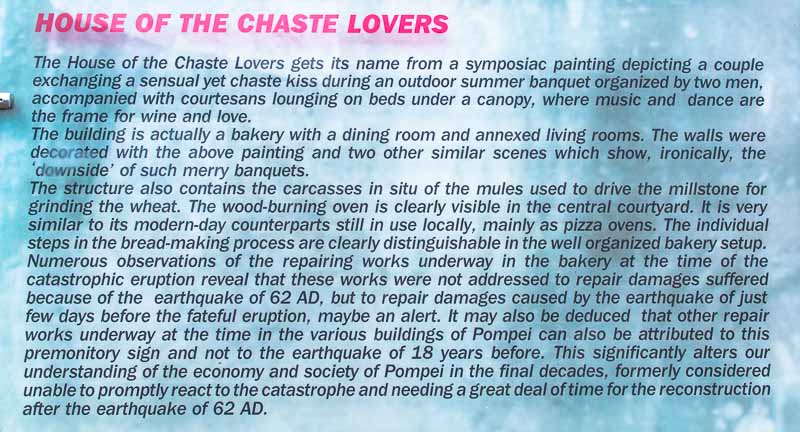
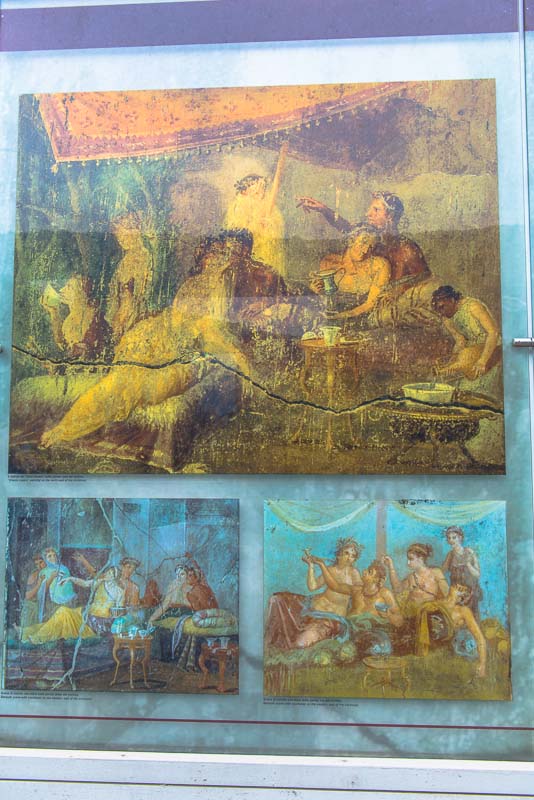
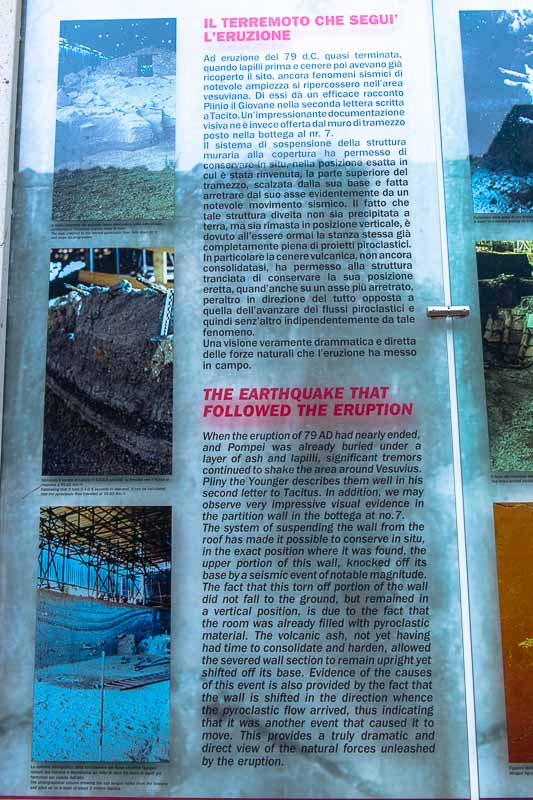
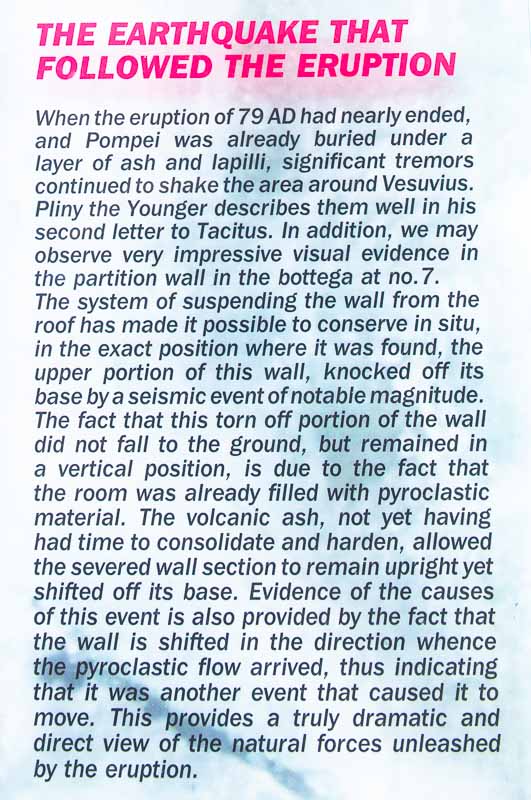
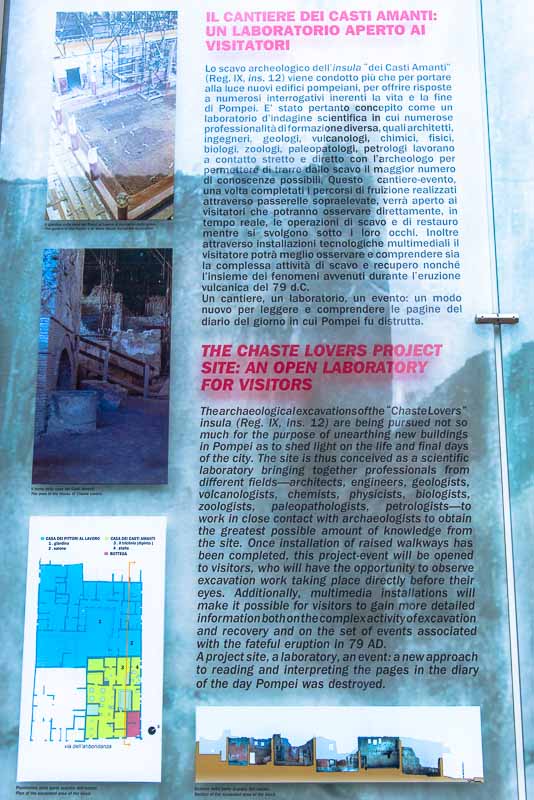
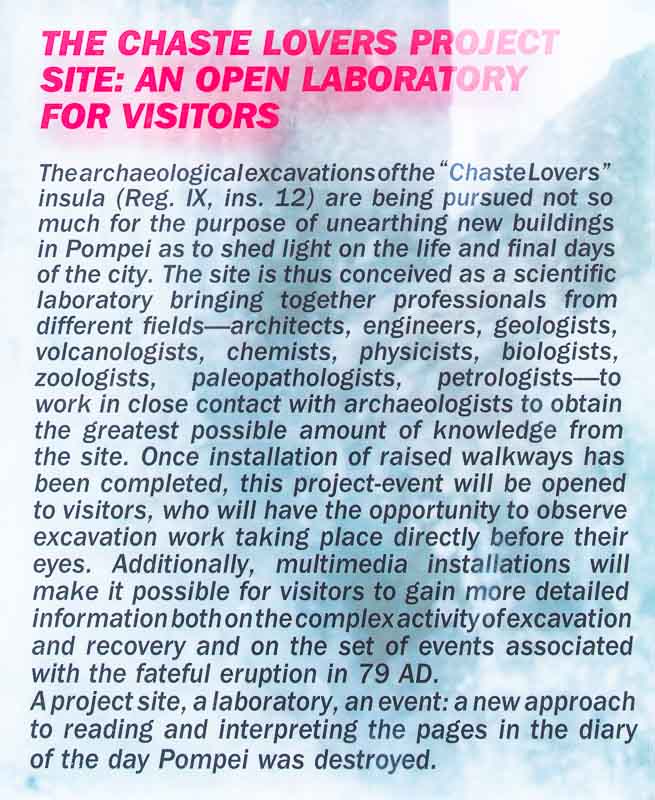
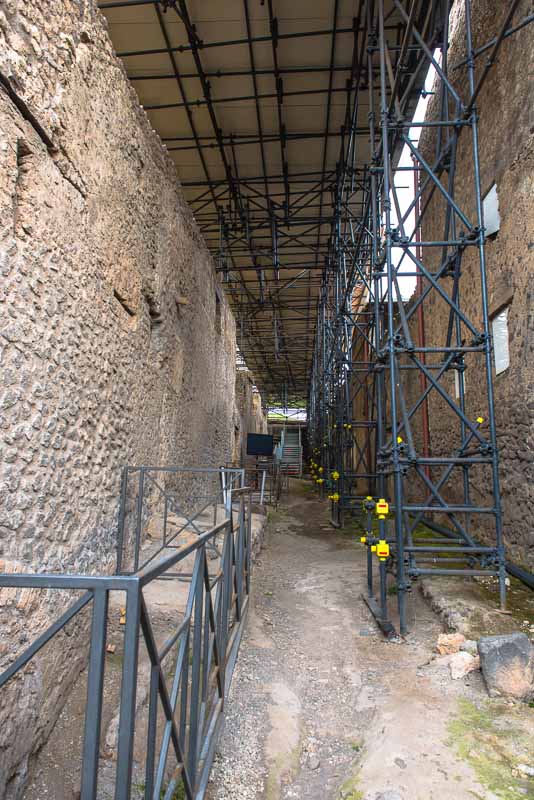
New excavation sites are roofed to be able to work at any time, and to protect the walls.
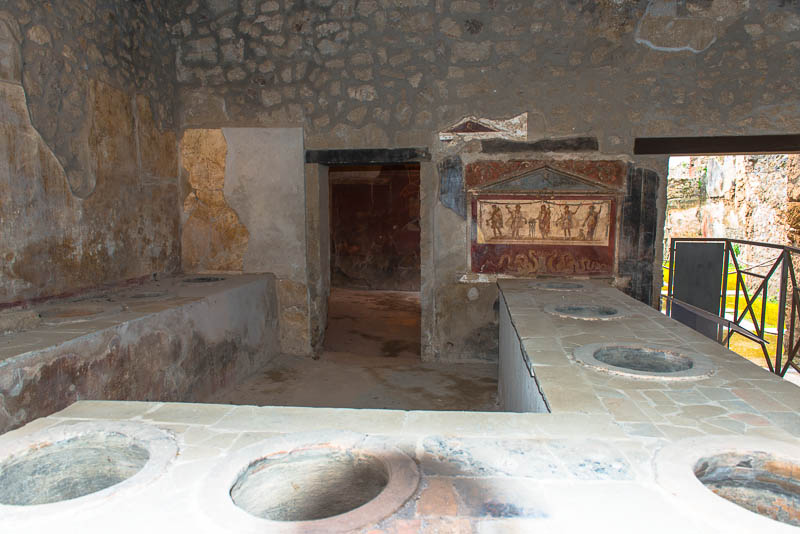
McDonalds in the Roman empire. Ceramic pots were filled with food sold to the people, immediately eating it. Fast food.
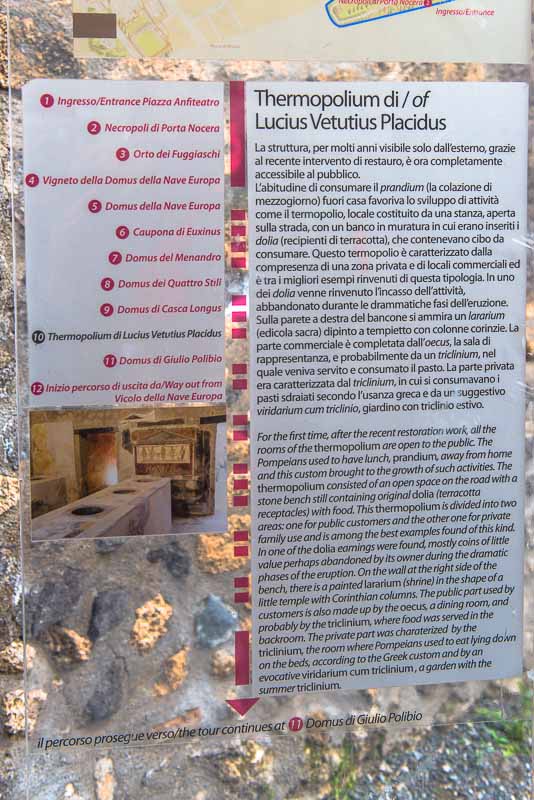
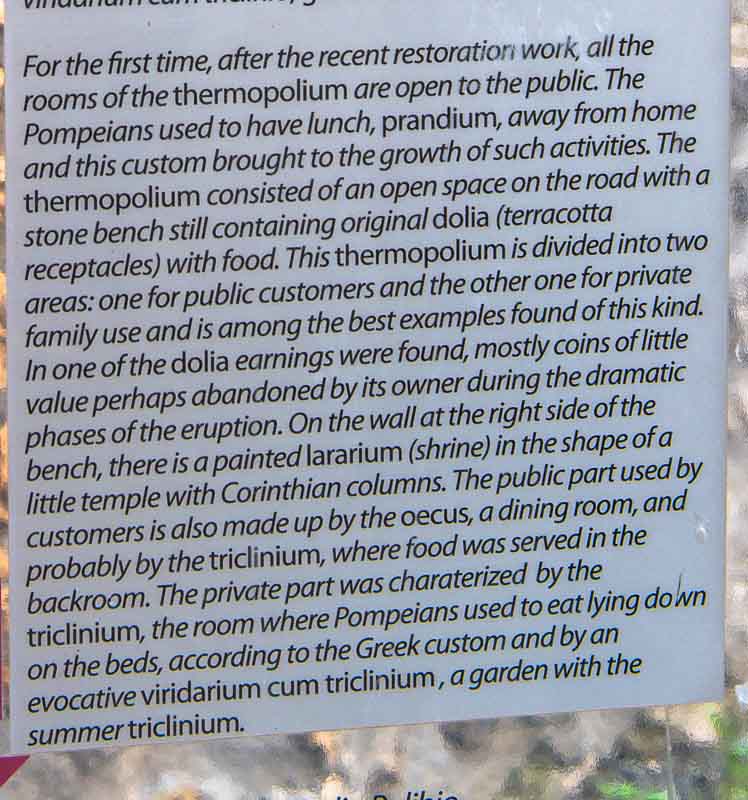
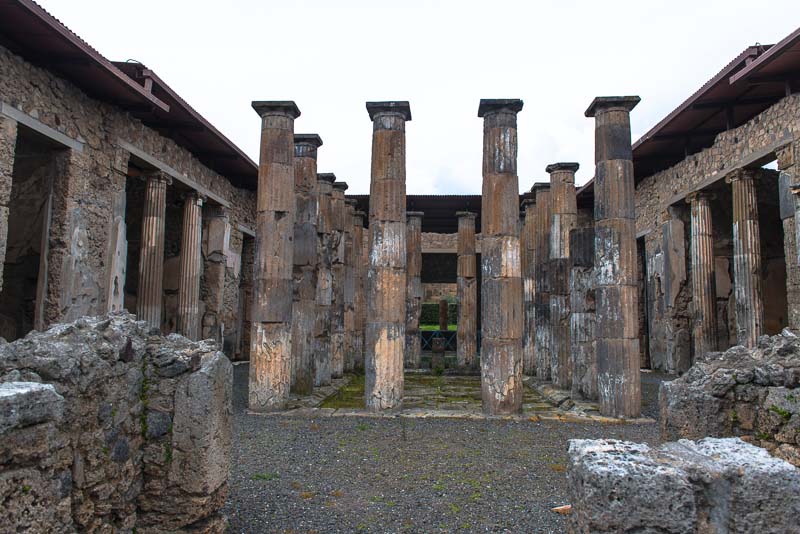
We proceed walking to see many more houses.
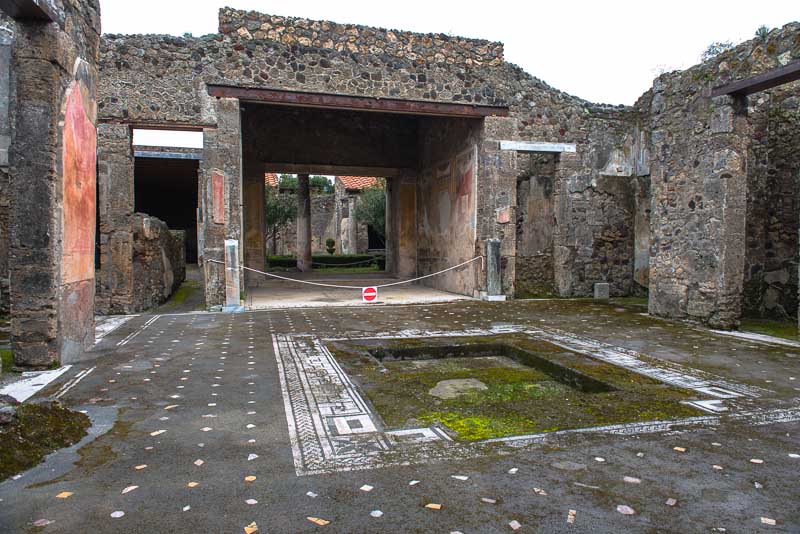

Here the excavation comes to an end - ...
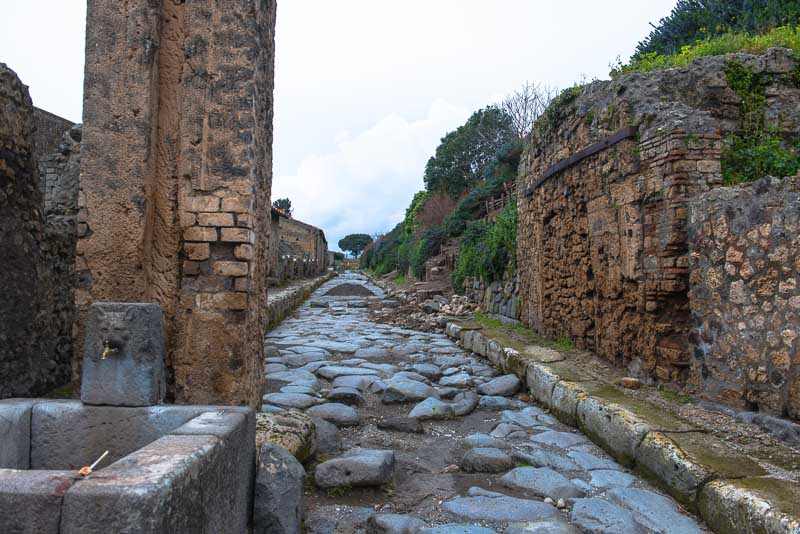
... but not the city. The area to the right shows the level before excavation.
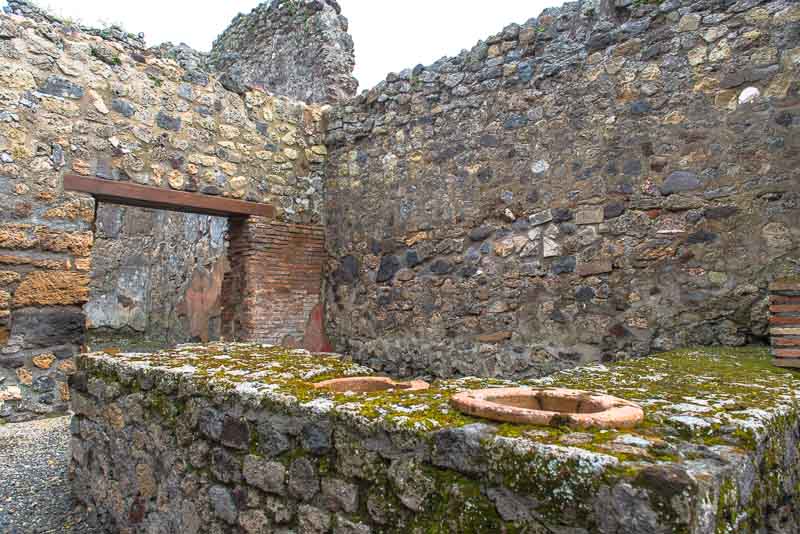
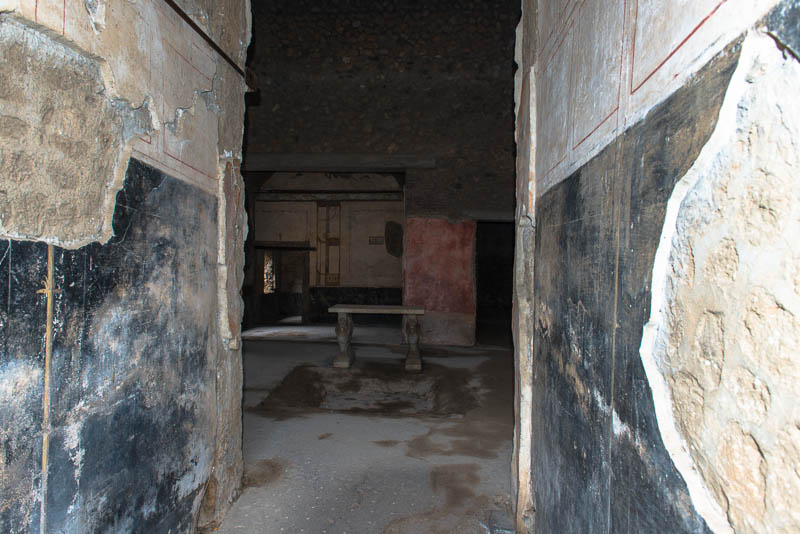
More houses
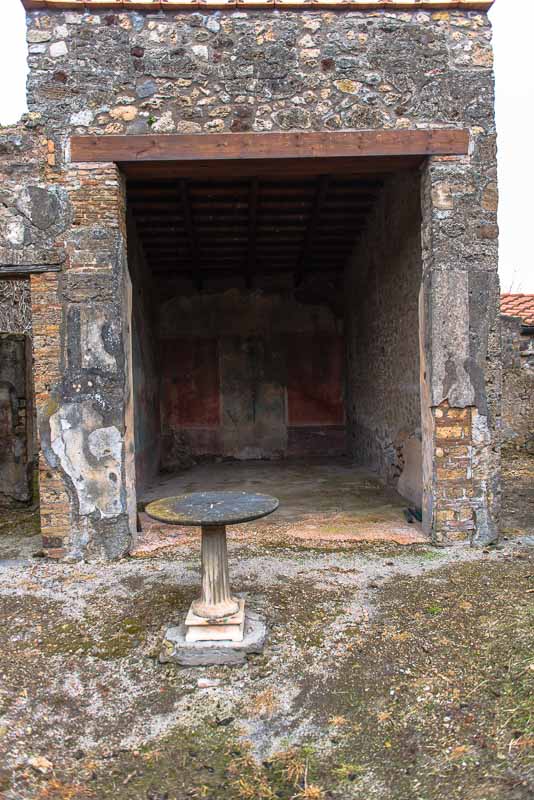
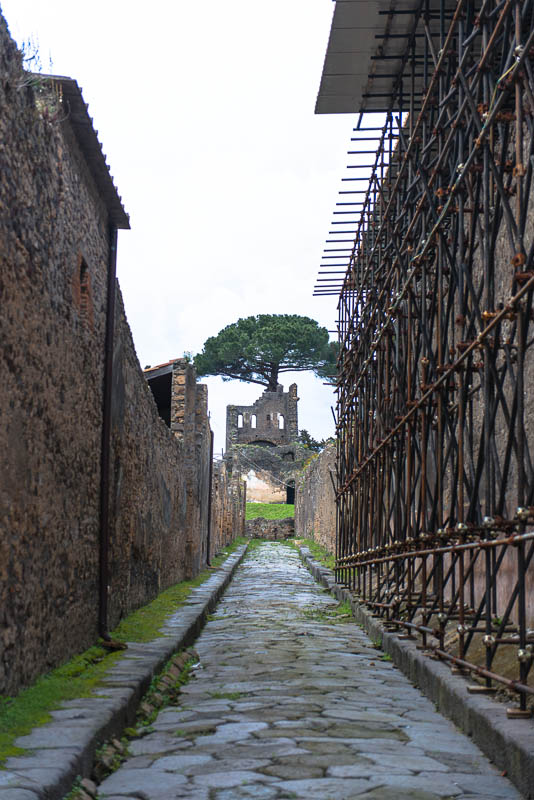
Some walls have to be jacked up.
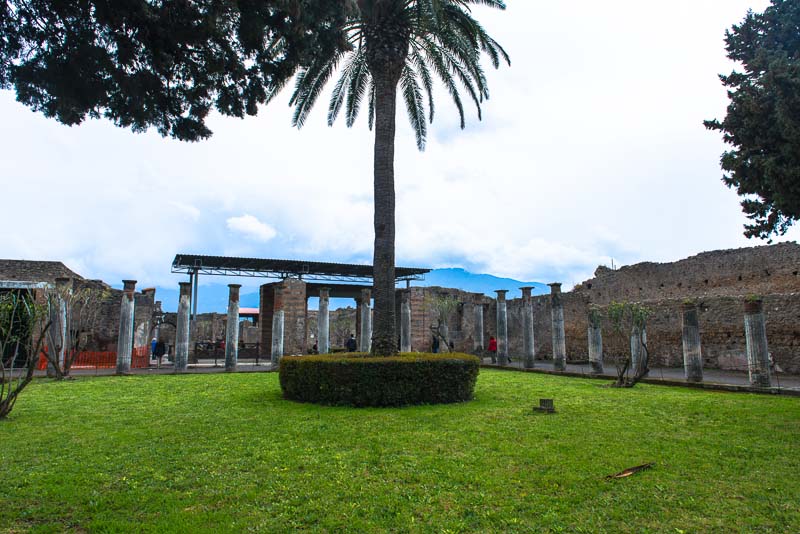
The "house of the faun"
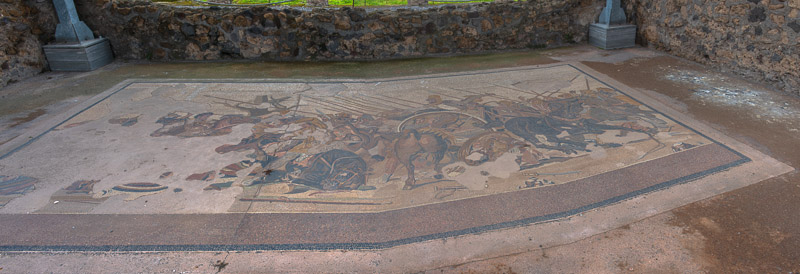
A famous floor mosaic ...
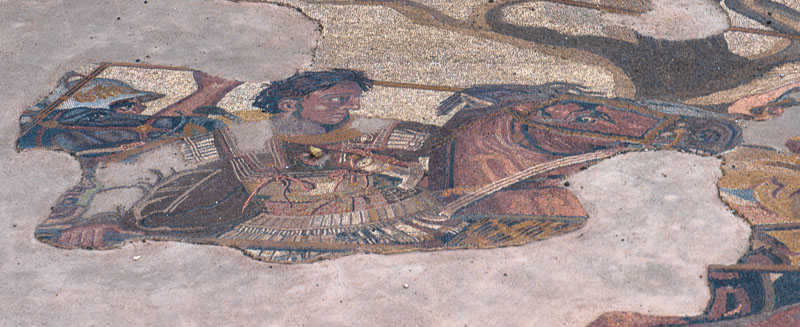
... depicting Alexander in the battle.
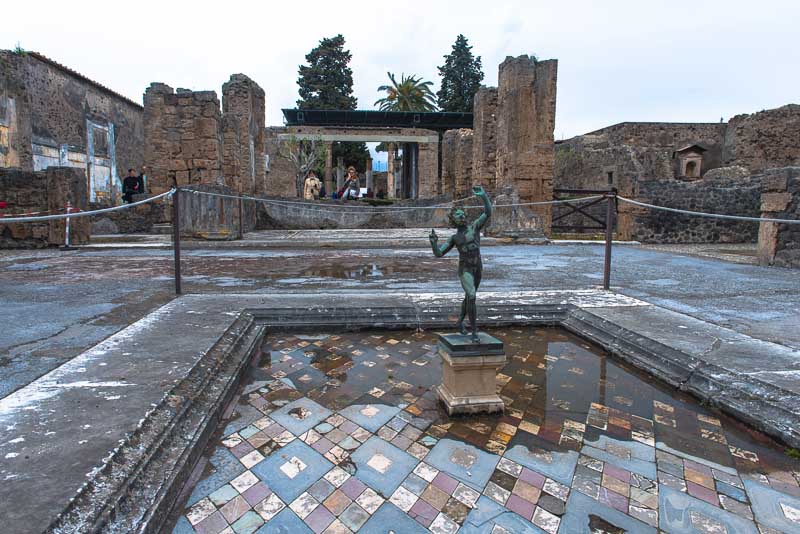
Inner courtyard of the "house of the faun"
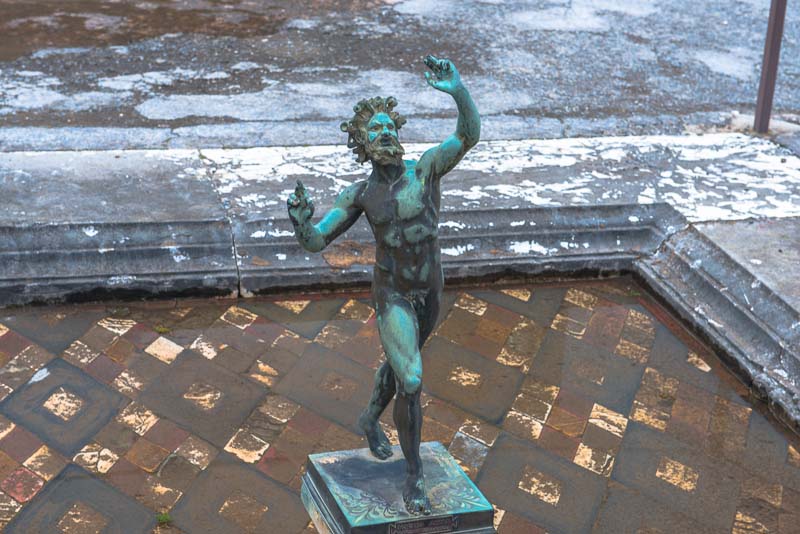
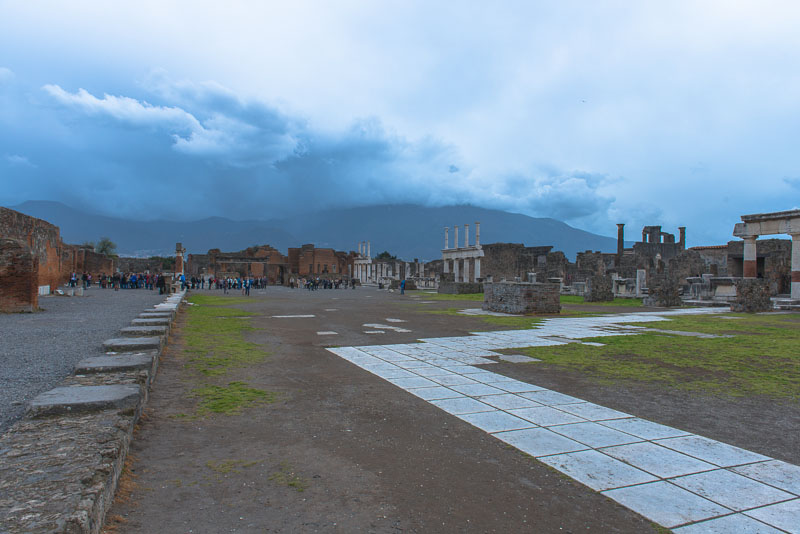
Back at the Forum, with the view to Vesuvius - still wrapped in clouds.
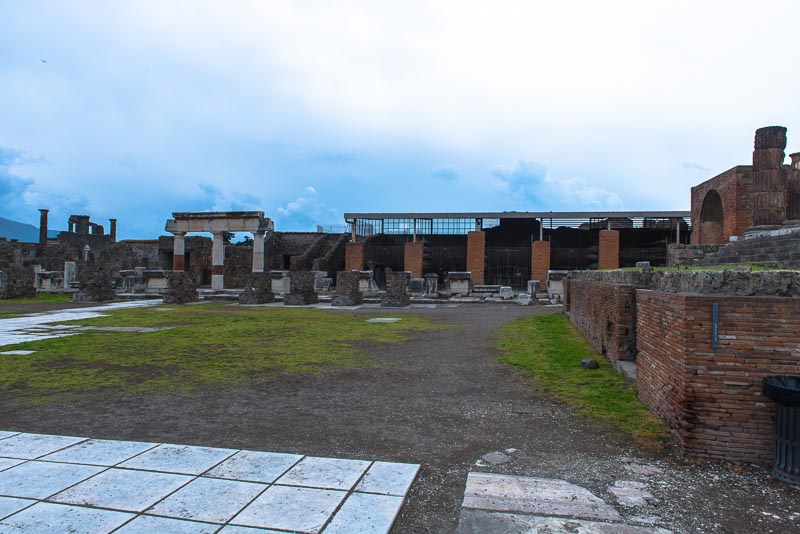
Showcases in the background ...
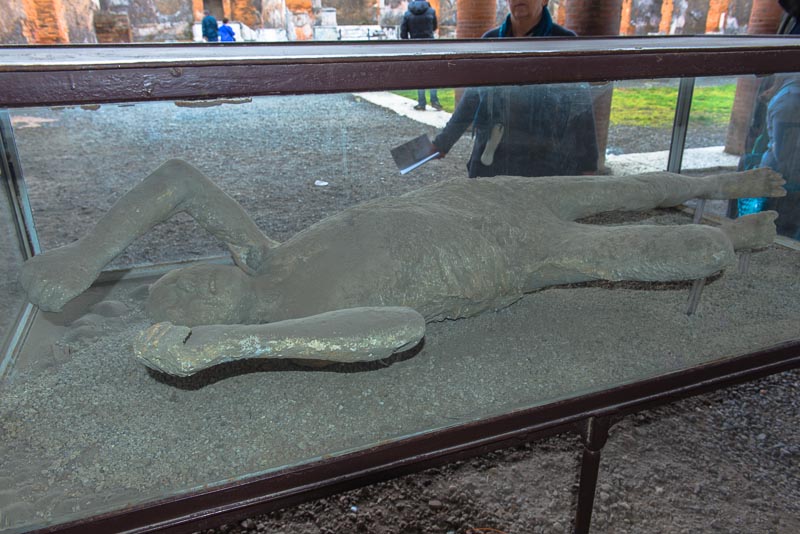
More people in scary, impressive positions - here in the "Macellum" near the Forum
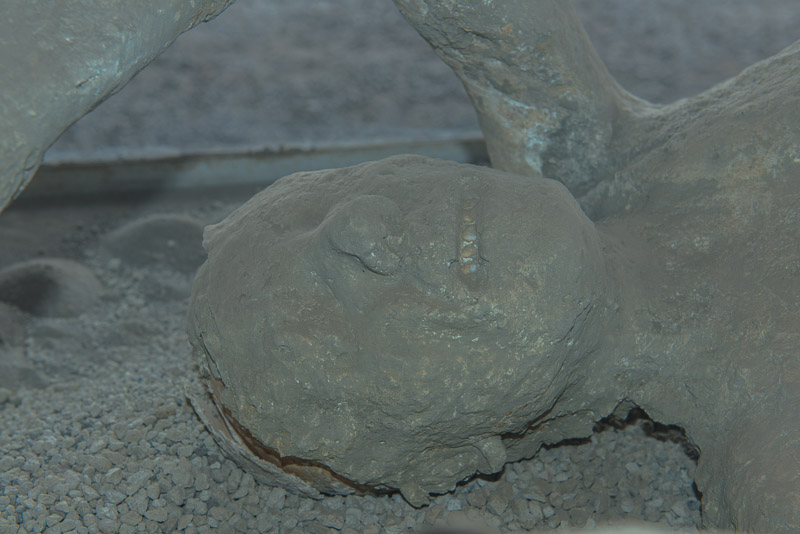
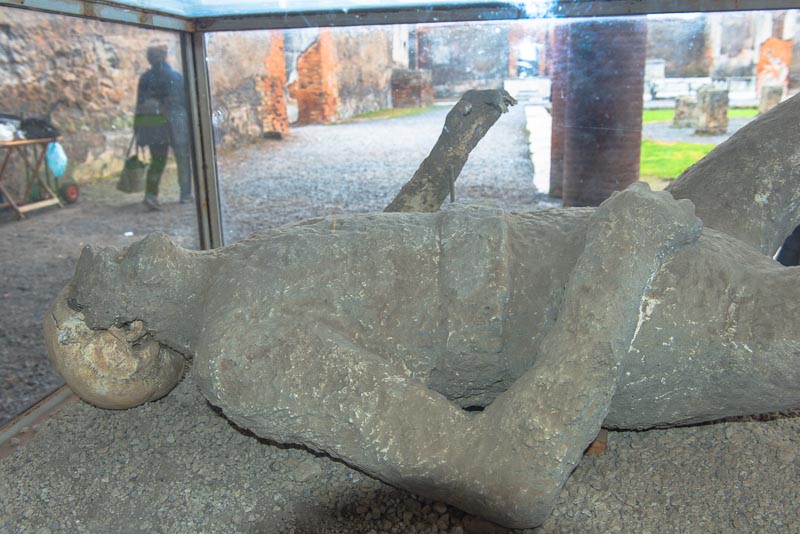
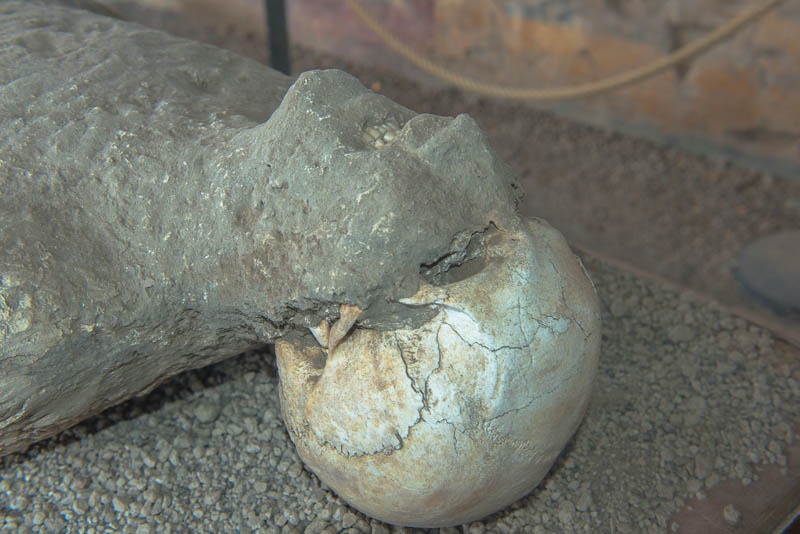
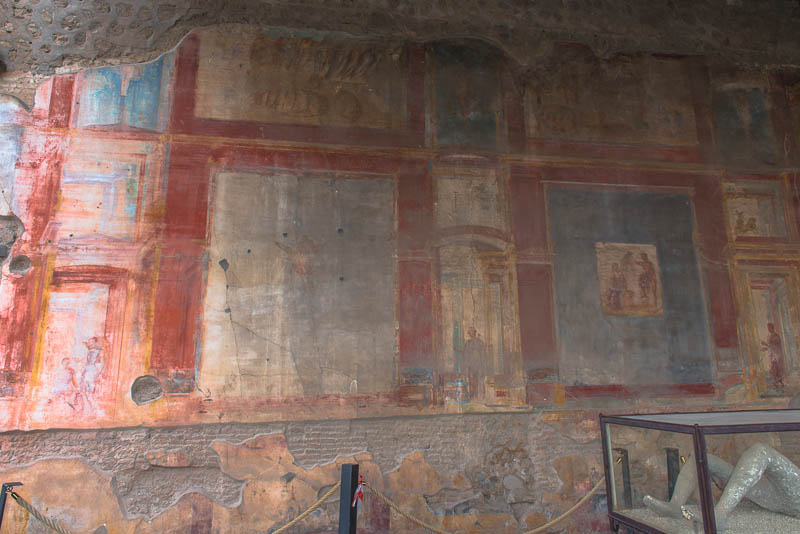
Wall paintings of the Macellum
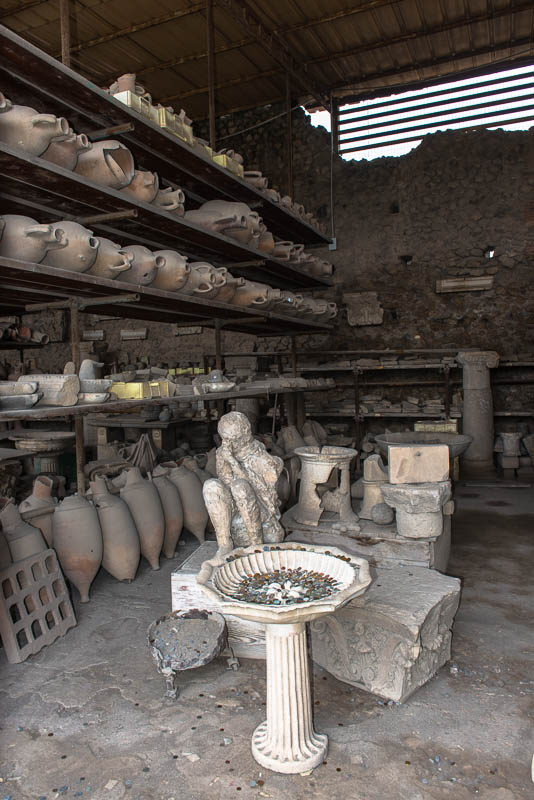
Lots of Roman amphoras in high racks
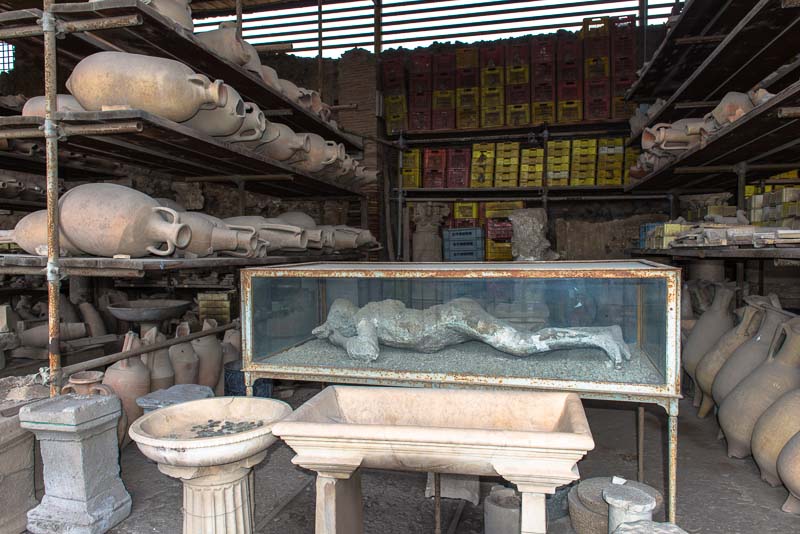
and more people. It is estimated that all of the 20.000 inhabitants of Pompeji that could not flee were killed.
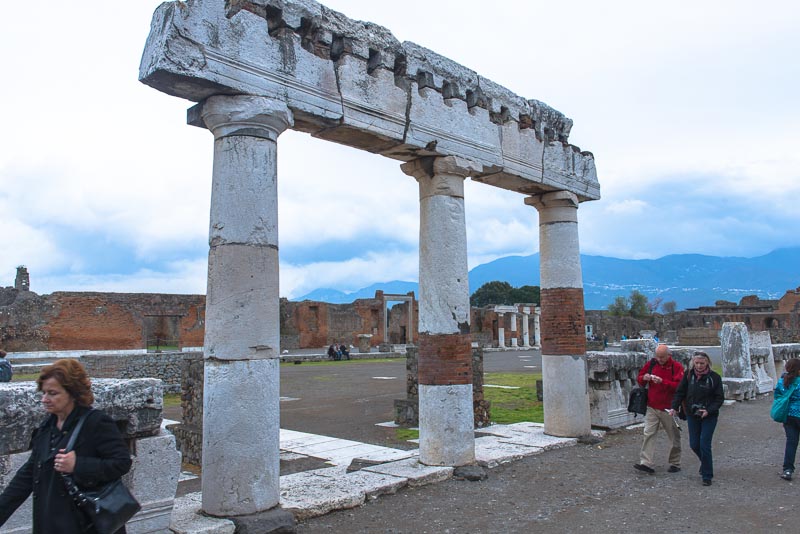
In the year 62, that is 17 years before the eruption, a huge earthquake destroyed much of the city. Emperor Nero did not give much money, so there are many provisional, fast repairs such as these marble columns repaired with bricks.
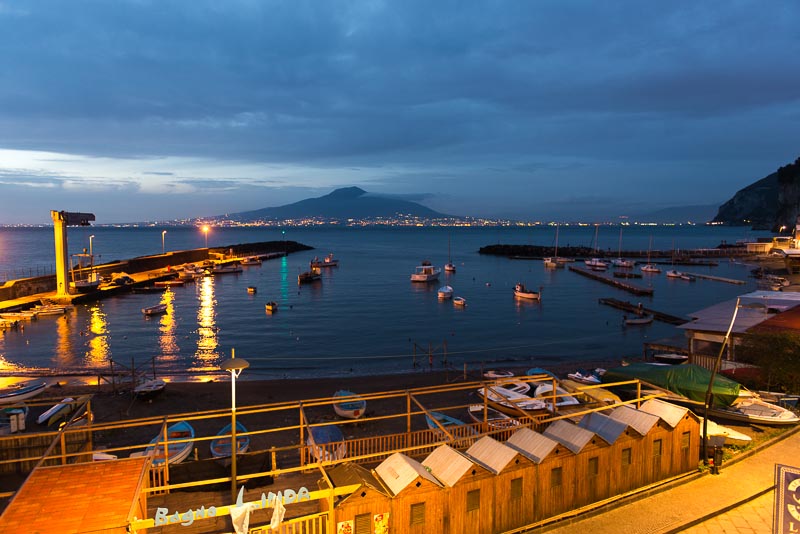
In the evening at the hotel balcony, contemplative ... this harmless looking mountain could do so much mischief?
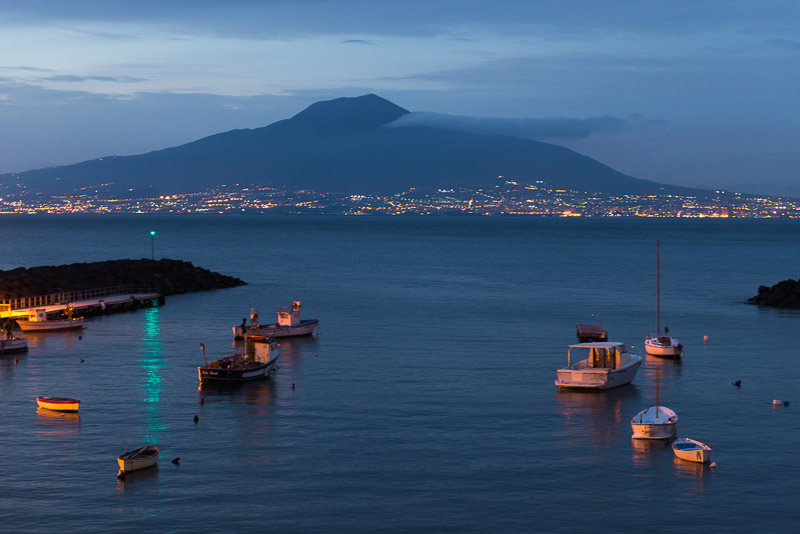
If you speak German and have 5 min time - a documentation about Naples, Vesuvius and the consequences of a big erouption of the dimensions of thew year 79.
More links:
Video simulation of a pyroclastic Stream finally destroying Pompeji